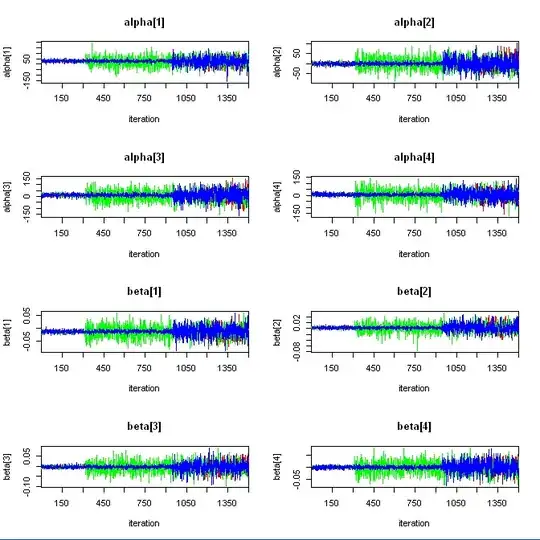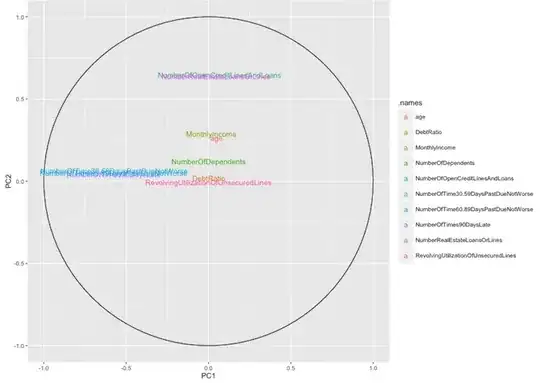I'm working on a simple classification project to better understand PCA, but I don't understand the results.
My dataset has 10 features, and I'm trying to predict the label (SeriousDlqin2yrs).
> head(dfTraining)
SeriousDlqin2yrs RevolvingUtilizationOfUnsecuredLines age
1 1 0.7661266 45
2 0 0.9571510 40
3 0 0.6581801 38
4 0 0.2338098 30
5 0 0.9072394 49
6 0 0.2131787 74
NumberOfTime30.59DaysPastDueNotWorse DebtRatio MonthlyIncome
1 2 0.80298213 9120
2 0 0.12187620 2600
3 1 0.08511338 3042
4 0 0.03604968 3300
5 1 0.02492570 63588
6 0 0.37560697 3500
NumberOfOpenCreditLinesAndLoans NumberOfTimes90DaysLate NumberRealEstateLoansOrLines
1 13 0 6
2 4 0 0
3 2 1 0
4 5 0 0
5 7 0 1
6 3 0 1
NumberOfTime60.89DaysPastDueNotWorse NumberOfDependents
1 0 2
2 0 1
3 0 0
4 0 0
5 0 0
6 0 1
I then ran PCA to produce 10 principal components, but to reach 95% of the variance, it takes 8 principal components. How should I interpret this result?
> dfTraining.pca <- prcomp(dfTraining[,2:11], center=T, scale=T, na.action=na.omit)
> summary(dfTraining.pca)
Importance of components:
PC1 PC2 PC3 PC4 PC5 PC6 PC7 PC8 PC9 PC10
Standard deviation 1.7254 1.2376 1.1053 1.0086 0.99993 0.96430 0.85622 0.74380 0.16184 0.10096
Proportion of Variance 0.2977 0.1532 0.1222 0.1017 0.09999 0.09299 0.07331 0.05532 0.00262 0.00102
Cumulative Proportion 0.2977 0.4509 0.5730 0.6747 0.77474 0.86773 0.94104 0.99636 0.99898 1.00000
I then visualized the result with ggbiplot and ggplot to make the following chart. If someone could help interpret it for me, I would appreciate it.

